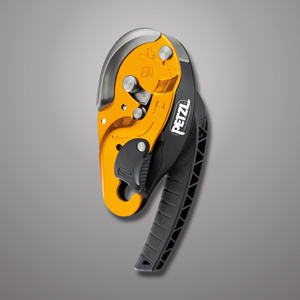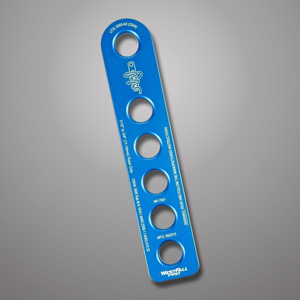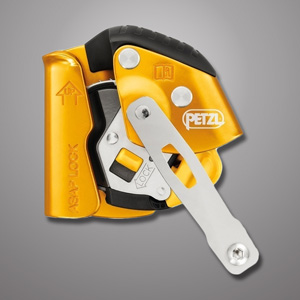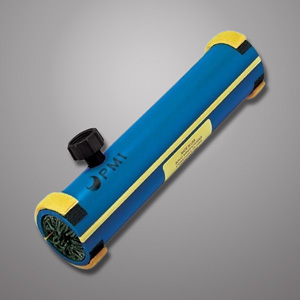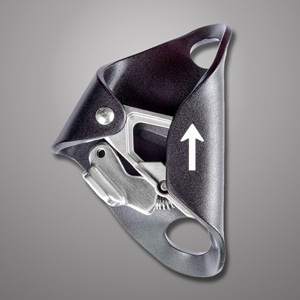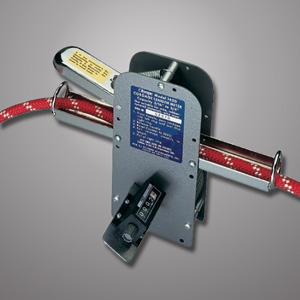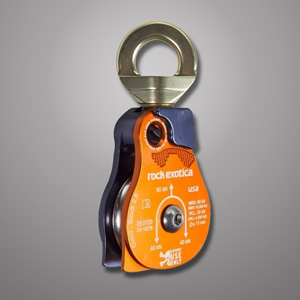YOU HAVE NO ITEMS IN YOUR CART.
Rope Devices
Rope Grabs, Ascenders, Anchor Plates, Descent Devices, and More
Rope devices help take your ropes’ versatility to the next level. Our massive selection of rope devices include accessories, anchor plates, ascenders and rope locks, descent devices, meters, pulleys, rope grabs, and rope protection equipment.
Accessories
We say this a lot, but it’s true. Rope is a versatile tool and can be used for nearly every application on a job site. Some applications may be hard on a rope, or they may require a special length or specific modifications. That’s where our selection of rope accessories come into play. From manufacturers like Sterling, PMI, Rock Exotica, and Petzl, we’ve got the rope accessories you need to get the job done.
Our rope accessories include rope cutters, measuring meters, load cells, swivels, wire rope clips, end dip, and rope washing equipment. Rope washing is an important part of rope care. A dirty rope can cause issues and end up costing you more money in the long run. With rope wash and a rope washer you can quickly remove dirt and debris from your rope. We’ve got an entire blog post dedicated to the importance of rope wash and how to properly wash for, care for, and inspect your rope. You can click here to check out that blog post.
Anchor Plates
An anchor plate, also referred to as a termination plate or rigging plate, is a piece of hardware, typically made from milled aluminum, which creates a tie-off point on ropes which do not have a factory created eye. The anchor plate creates a way to attach a rope to a structure or load without relying on a knot.
Anchor plates are beneficial because they prevent the need for tying a knot in a rope. Knots, while they may seem strong, severely weaken a rope and can cause other issues like shortened life span. If you do find yourself having to tie a knot in a rope, please refer to manufacturer specifications on how much the knot will affect the ropes strength.
Our selection of anchor plates come in a range of different shapes and sizes. Our anchor plates are sourced from a variety of manufacturers like Petzl, DBI Sala, Sterling, WestFall Pro, and more. Need anchor plates for different size ropes? Don’t worry, our anchor plates can cover common rope sizes to fit your application.
Ascenders and Rope Locks
Ascenders, get their name from the fact that they help you ascend up a rope. The basic functionality of a rope ascender is that it clamps on to the rope and can move up, but not down the rope. This means as you travel up the rope it captures your progress and prevents you from sliding down.
There are three main types of ascenders: hand, foot, and chest. The foot ascender allows you to “climb” up the rope and use a hand or chest ascender as a backup progress capture device. A chest ascender connects to a sternal D-ring of your harness. It can be used with either a foot ascender or a hand ascender. The last option, a hand ascender, is used with a foot loop to help you climb the rope. This ascender is almost always used with other forms of ascenders.
Our selection of ascenders and rope locks feature hand ascenders, foot ascenders, chest ascenders and foot loops from manufacturers like Petzl and ISC.
Descent Devices
A descent device is a mechanical device which provides a means of controlled lowering on a synthetic rope for rescue and rope access work positioning. Generally the rope is fed through or around a descender to create friction which can be controlled by the user to vary their descent speed and position. Descent devices come in range of different styles and sizes. With descent devices from manufacturers like Petzl, ISC, WestFall Pro, DBI Sala, and more - we’ve got the equipment you need to help you descend safely.
Looking for a full solution? Look no further. Our dedicated Gear Experts® put together a GME Supply controlled descent kit that includes rope, a rope bag, a pass-thru anchor, 2 carabiners, a descender, and a GME Supply rope bag.
Meters
Buying pre-cut lengths of rope is what most people prefer to do. However, sometimes you might require custom lengths of rope - or you might just prefer to buy a spool of rope and cut it yourself. If you regularly cut rope off of a spool, a cordage meter is an indispensable tool. A cordage meter contains a toothed measuring wheel and stainless steel pressure shoe that keeps contact with the rope for accuracy. Our cordage meters come with a selection of brackets for use and storage and is available in both metric and imperial configurations.
Pulleys
Pulleys also referred to as a block or snatch block, allow you to use your rope to its full potential by doing things like creating mechanical advantage. By definition, a pulley is a wheel mounted on an axle or shaft with a grooved rim around it designed to efficiently support the movement of a cord, rope, or wire around its circumference.
Mechanical Advantage: Mechanical advantage is a pretty common term when it comes to pulleys, but what exactly is mechanical advantage? It is expressed like this: 3:1, 4:1, 5:1, etc and represents the measure of force amplification achieved by using a tool, mechanical device, or haul system. Essentially, a device (like a pulley), preserves the input power and trades off forces against movement to obtain an amplification in output force. Basically, mechanical advantage multiplies the force you apply. A mechanical advantage of 5:1 means that the device reduces the effort needed to lift an object by 5 to 1. For example, if you want to lift 100 pounds, a 5:1 mechanical advantage would allow you to only exert 20 pounds of force.
One thing to consider when selecting your pulley is standard compliance. For example, if you are using your pulley for lifting purposes you want to make sure the pulley meets the ASME B30 Standard. More specifically it should meet Chapter 26-5 which covers rigging blocks, like those you would use with a capstan hoist. ASME B30 provides a range of different standards for pulleys including materials, rated loads, identification, and operating practices. If you’d like more information and a further breakdown on the ASME B30 standard, click here to check out our detailed blog post. We’ve also got a FREE downloadable ASME B30 compliance poster in our Knowledge Base.
Rope Grabs
You’ve got a lifeline, but now you need a way to make sure you are secured to it. That’s where rope grabs come in. Rope grabs are extremely convenient and easy to use. They provide 100% tie off by staying attached to your lifeline and moving up and down with you as you ascend or descend. These little devices work by latching onto the rope when they sense a fall preventing you from getting injured. Not to mention, they save a ton of time because you don’t have to stop every few feet to reattach your lanyard as you climb.
Rope Protection
Like we’ve mentioned many times - rope is an important part of safety in any kind of at-height work. If your rope is in poor condition it is essentially useless and you will have to buy a new rope. Not to mention that rope isn’t exactly cheap. That’s where rope protection comes into play. Rope protection is pretty self explanatory in that it is equipment that helps you protect your rope. The type of protection you can use varies by the job at hand. Our selection includes rope rollers, material rope covers (protectors), end dips, and heat shrink.
While rope protectors are beneficial and can help lengthen the lifespan of your rope, we’d like to remind you that rope inspections should still be done regularly even if you are using some form of rope protection. For more information on rope inspection, click here to check out our blog post about what to look for and how to properly inspect a rope. We also provide free downloadable rope inspection form in our Knowledge Base.
For more information about rope devices, or if you have any questions, click here to get in touch with one of our Gear Experts®.







